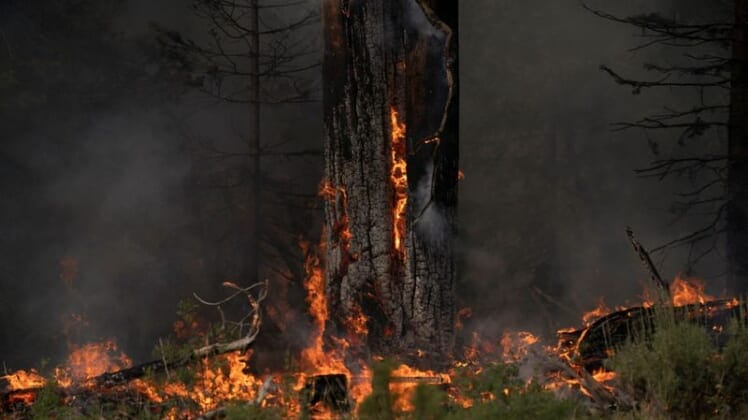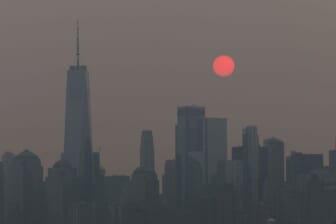
By Deborah Bloom
OREGON CITY, Ore. (Reuters) – The destruction wrought by the extreme heat and wildfires raging across Oregon this summer includes all kinds of farms – including one that grows trees for the Christmas season.
Jacob Hemphill, owner of Hemphill Tree Farm, estimates that he has lost over $100,000 worth of Christmas trees as a result of the recent “heat dome” event, which saw temperatures of 115 degrees Fahrenheit (46.1 °C) in some parts of the Portland metropolitan area.
“The second day of the heat, it was 116. I came in the driveway that night and seen the trees were basically cooking. Burnt down to nothing,” Hemphill recounted of the heat damage to his saplings.
The losses will take a toll on his family this year, he said. But he has hope things will improve next year.
“I mean, you just kind of got to roll with the punches, and replant next year… and hopefully make up for the loss that we’re gonna have in the future.”
Beyond Christmas trees, Reuters spoke to several farmers across the Willamette Valley who said the heat wave, coinciding with a statewide drought, has caused unprecedented levels of damage to their crops.
The so-called Bootleg fire https://www.reuters.com/world/us/lightning-found-have-ignited-oregons-mammoth-bootleg-fire-2021-07-22 about 250 miles south of Portland has blackened just shy of 400,000 acres (over 160,000 hectares) of desiccated brush and timber in and around the Fremont-Winema National Forest since erupting in early July. That makes it Oregon’s third-largest wildfire on record, dating back to 1900.
It’s also the largest of roughly 80 major, active blazes reported in 13 Western states.
At least 67 homes have been destroyed and another 3,400 were listed as threatened by the Bootleg fire, with an estimated 2,100 people under orders to evacuate or be ready to flee at a moment’s notice.
The blaze was ignited by lightning and has been stoked by hot, gusty, dry weather. But firefighters have taken advantage of calmer winds, and cooler, moister conditions over the past few days to extend and bolster containment lines around the fire’s periphery.
At last report, containment stood at 38%, up from just 7% a week ago.
Scientists have said the growing frequency and intensity of wildfires are largely attributable to prolonged drought and increasing bouts of excessive heat that are symptomatic of climate change.
(Reporting by Deborah Bloom in Oregon City; Additional reporting by Steve Gorman in Los Angeles; editing by Diane Craft)



